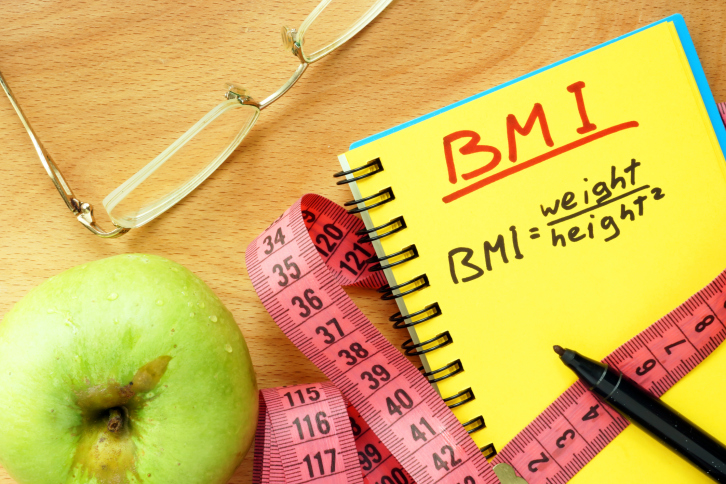It is no secret that obesity is a major health concern, making weight loss a common goal among gym goers. Fitness centers are numerous and most weight loss competitions are centered on the scale. Many fitness facilities measure various external factors, such as body mass index (BMI), hip/waist ratio and scale weight. While research supports these measures as indicators of potential disease, changes in body composition are also important and simple measures for a trainer to track.
Body composition measurement gives a better view of the body's tissue makeup, particularly the amount of body fat and fat free mass or lean tissue. The most accurate methods of measuring body composition are dual energy x-ray absorptiometry (DEXA), magnetic resonance imaging (MRI) and air displacement plethysmograph (ADP) a form of whole-body densitometry. While these methods are most accurate, they are expensive and inconvenient for the client and cannot be performed in the field.
The most common methods of measuring body composition include skinfolds, hydrostatic weighing and bioelectrical impedance (BIA). While skinfolds are easy to do and give a direct measurement of subcutaneous fat, the tester error is high and it is not practical for obese clients. Hydrostatic weighing, another form of densitometry, once the "gold standard" of body composition measurement, offers a lower tester error, but is less practical and convenient as it requires specific and expensive equipment. The bioelectrical impedance method may offer the best of both worlds. This method allows the practicality and simplicity of skinfolds with the accuracy and low tester error like that of hydrostatic weighing. This is especially true with those bioelectrical impedance systems that use multiple electrodes to measure electrical current resistance as it passes through the body. Electrode placement may be hand-hand, foot-foot or hand-foot, with hand-foot having the highest accuracy. When bioelectrical impedance analysis is performed under consistent conditions it will give a detailed report of a client’s body composition, often showing fat mass, fat free mass, lean dry mass and total body water.
These numbers can then be incorporated into a client’s exercise program. A trainer can use these numbers to both plan and assess the client's program. When planning an exercise program, the typical goal is weight loss. With BIA that goal can be redirected to fat loss and/or muscle gain. Program assessment is done relative to progress to or achievement of goals. BIA will show changes in fat loss and/or muscle gain with re-test of BIA 3-6 months later.
Bioelectrical impedance analysis also provides greater opportunity for client success. A client may have lost a few pounds on the scale, but with BIA it becomes evident that they lost several pounds of fat and gained (replaced it with) fat free mass or muscle, thus showing a minimal change on the scale. This true change and goal accomplishment can enhance motivation without changes on the scale.
More facilities are also looking at internal biometrics to better serve their patient/client as a more comprehensive assessment of health status and the potential of disease. Internal (blood) biometrics such as total cholesterol (TC), low density lipoprotein (LDL), high density lipoprotein (HDL), triglycerides (TRI) (circulating lipids), glucose (GL) (circulating blood sugar) and HbA1c, (long term blood glucose levels), will give a better picture of a person's overall health and fitness level. Moderate risk levels for those blood biometrics are TC 220; HDL 50 for males and 60 for females; TC/HDL ratios of 5 for males and 4.5 for females; TRI 130; GL 115; and HbA1c at 7.5. These measures can be attained through a simple finger stick blood sample at a clinic or medical fitness facility. As a trainer, one needs to be familiar with the disease risk stratification process and educated on biometric norms and thresholds for disease risk.
Beyond the basic advice of "exercise more and eat better" more specific diet modifications are needed to lower blood biometrics and reduce disease risk. Trainers need to have a more in-depth conversation with clients in regard to their eating habits and more comprehensive body composition tools and internal biometrics can be useful in offering this to clients.
With the current technology and assessment methods available, the personal trainer can now use more important and specific measures beyond the weight scale to screen for potential health risks and disease, better serve the client and help them meet their goals.
J.R. Burgess is the CFO/VP of Rejuv Medical and President of MedFit. Partnering with Dr. Joel Baumgartner MD, they developed a successful medical practice that integrates medical fitness. The mission is to help change the future of healthcare using exercise and nutrition as medicine and are sharing their model to the world through licensee and franchise opportunities. www.rejuvmedical.com, www.mymedfit.com

















